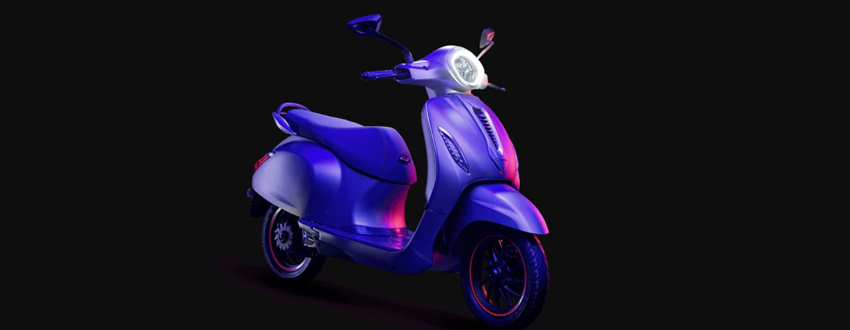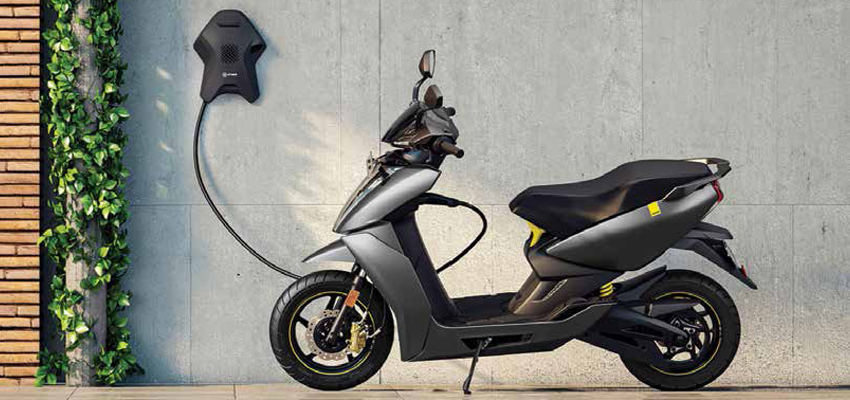The Race for E-Mobility

Electric Vehicles (EVs) are no longer a distant dream. In the last two years, more than one million electric vehicles hit the road in India. Over 350,000 units were sold in FY18 while 750,000 units were sold in FY19. Clearly, the government and startups are going all out to up the electric mobility game to ensure a clean, green, and responsible India. In fact, the Indian government is emphasising on the sale of only electric vehicles by 2030, or having a larger percentage of EVs on the road by then. In 2020, every manufacturer worth its salt has at least one EV on the road or in the works. This issue, we look at some of the best electric cars and motorbikes available in India in 2020
Thanks to rapidly depleting oil reserves and the increasingly destructive fallout of climate change, conventional fuel vehicles are no longer viable for the future. But its not just about the environmental impact. An electric vehicle has far greater benefits than first meets the eye. Owners of an EV have the advantage of much lower running costs. The electricity to charge an EV works out around a third as much per kilometre as buying petrol for the same vehicle.
A battery electric vehicle (BEV) has a lot less moving parts than a conventional petrol/diesel car. There is relatively little servicing and no expensive exhaust systems, starter motors, fuel injection systems, radiators and many other parts that aren’t needed in an EV. Batteries do wear out so replacement batteries will eventually be needed. Most car manufacturers warrant EV batteries for around eight years.
Reduced harmful exhaust emissions is good news for our health. The better air quality will lead to fewer health problems and costs caused by air pollution. EVs are also quieter than petrol/diesel vehicles, which means less noise pollution.
Recent findings have shown that several EV features can improve safety. EVs tend to have a lower centre of gravity that makes them less likely to roll over. They can also have a lower risk for major fires or explosions and the body construction and durability of EVs may make them safer in a collision.
With so many advantages, an EV is an investment which will pay for itself in the long run. The best part is that due to technological maturation and flexible pay-ment options, you don’t have to break the bank to buy an EV. Without further ado, let us look at some of the most value for money EVs in India in early 2020.
TaTa NexoN eV
 N Chandrasekaran,
N Chandrasekaran,Tata Sons
Group Chairman
“E-Mobility is an irreversible mega trend and an imperative for addressing pollution and generating job opportunities in India. Through Tata uniEVerse, our Group companies have synchronised their efforts to develop a holistic e-mobility ecosystem to accelerate the adoption of EVs in India. I am delighted that this ecosystem has come together with the launch of Tata Nexon EV, a path-breaking electric SUV that can match the aspirations of mainstream Indian customers.”
 Guenter Butschek,
Guenter Butschek,CEO & MD, Tata Motors
“After 16 months of strenuous effort, we are delighted to launch India’s Own Electric SUV, the Nexon EV. This high performance, connected vehicle is uniquely suited to address the aspirations of Indian customers, and making EVs mainstream. We are confident that this game changing product will further reinforce our commitment towards developing sustainable and responsible mobility solutions for India.”
Tata recently unveiled the much anticipated Nexon EV, and to call it a beauty is the understatement of the year. The full-electric version of the Nexon boasts of a gorgeous updated exterior design over the petrol/diesel variants of the vehicle.
The Nexon EV makes use of Tata’s new Ziptron EV technology. The EV will feature a 30.2kWh lithiumion battery pack that powers an electric motor capable of 129bhp and 245Nm of torque. With a state of the art 30.2 kWh battery, the electric car gives you a consistent drive of 312 km on a single charge, so you can go the distance. The car’s battery charges from 0%-80% in just an hour, which is even faster than most smartphones available currently.
In the past, most people stayed away from electric vehicles believing that they are no match for conventional vehicles. But this is no longer true. The Tata Nexon EV can go from 0-60 kmph in 4.6 seconds and from 0-100 kmph in just 9.9 seconds. The Nexon EV is no slouch, and can give any petrol/diesel car a run for its money.
Another advantage of owning an electric car is the smart connectivity that comes with it. With the ZConnect app that takes care of everything, you can stay connected to your Tata Nexon EV anytime, anywhere. The app connects seamlessly with your car to give you driving statistics and analytics, increased safety and security features, and the ability to command your car remotely.
Because the Nexon is an electric vehicle, the Government of India lets you avail a deduction for interest payments up to Rs.1,50,000 under Section 80EEB. So what’s your excuse for not booking a Nexon right away?Starting price- Rs.13,99,000 ex-showroom.
mercedes-beNz eQc

 Martin Schwenk, MD
Martin Schwenk, MD& CEO, Mercedes-Benz India
“We believe electric has a big future. Sooner or later all manufacturers have to do something if they want to be credibly available in the market. We were pondering for several months on how to do it and when to do it and we feel, right now is a good moment. On the one hand, some government policies are supportive of electric vehicles. There’s a momentum building up. The EQC is an innovative and sporty car. The EQC will target a small market and it will give us the opportunity to learn how to establish the brand and the vehicles so we well take it at a measured pace in the beginning”
Mercedes-Benz has launched the EQ electric sub brand in the country and that’s a huge step for the carmaker. Mercedes-Benz then wants to up the ante when it comes to bringing in a luxury electric car. Mercedes-Benz has big plans globally with the EQ brand and it has already launched its first all electric SUV the EQC in international markets. The EQC has a very familiar font end with a large grille and a twin slat AMG-esque design. The grille itself is shrouded with a black surround that flows into the LED headlamps. The LED daytime running lights in the headlamp itself are complemented with a LED lighting strip just over the front grille.
The interior on the new Mercedes-Benz EQC is a very familiar one too. The infotainment and instrument cluster are identical to what you get on the likes of an E-Class while the central console has a similar feel too. Of course, there are some changes, including some design elements that ape cooling vents on an electric motor and new AC vents too. The EQC is powered by a dual motor setup, which includes one motor for the front axle and one for the rear. This makes the EQC an all-wheel-drive SUV or as Mercedes likes to call it, a 4Matic. The EQC’s motors are powered by an 80 kWh lithium-ion battery, that helps the motors produce a combined 300 kW (402 bhp) of peak power and 765 Nm of peak torque. The new EQC gets an allelectric range of around 400 km with a quick charge option on the SUV too.Expected Price– Rs 1 Crore
hyuNdai KoNa

 SS Kim, MD & CEO of
SS Kim, MD & CEO ofHyundai Motor India LTD
“India is ushering into a new era with clean and connected mobility. We are committed to the government’s vision of shared, connected and clean mobility. Hyundai is leading the feature mobility solutions globally and will bring in the most relevant technology in the clean mobility space in the Indian market. As we embark on the journey on India’s future mobility, the launch of India’s first fully electric SUV Kona will be a revolutionary and definitive forward move to change the perspective towards electric cars altogether.”
Electric vehicles or EVs are coming our way fast, but so far, there have been compromises be it in terms of power, range and usability, or price that puts them out of reach of most buyers. But the Hyundai Kona Electric could be the one that changes that. The subcompact Hyundai Kona is the whole package: Striking looks, engaging driving dynamics, and a comfortable cabin.
The Kona gives you 452 km on a single charge. It is no slouch either, going from 0-100kmph in just 9.7 seconds. It also has a sports mode for adrenaline junkies who love the thrill of sports cars. Hyundai gives you an 8 year/160,000 km battery warranty, so you can rest assured that your investment is protected.
The cabin of Hyundai Kona boasts of features like shift by wire drive controls, 17.77 cm touchscreen infotainment system with Android Auto and Apple CarPlay, digital instrument cluster with supervision and multi-function steering wheel. There is a 10-way power driver seat as well. Other features include front ventilated seats in leather, automatic AC, smart key with push-button, smartphone wireless charging and electric sunroof.
The car also comes features like intaglio patterned front grille having integrated charging port, split-type headlamp set-up with LED headlights, LED DRLs, LED taillights and skid plates.
bajaj cheTaK elecTric

 Rajiv Bajaj,
Rajiv Bajaj,MD, Bajaj Auto
“Getting into electric is inevitable, but it is also a niche segment just like three wheelers and quadricycles. I want to make the product irresistible, which will force people to buy even if they don’t really need it”.
 Rakesh Sharma, Executive
Rakesh Sharma, ExecutiveDirector, Bajaj Auto
“We felt the obvious choice for an electric foray would be the scooter as it was a no-conflict situation. With more EVs I sell, I will lose volumes in some other segment. Our specialisation in motorcycles very neatly sidestepped conflict”.
The iconic Chetak scooter ruled the Indian two-wheeler landscape for three decades between 1972 and 2006. Now Bajaj has launched Chetak in a whole new electric version for a new generation. Bajaj Chetak has been introduced in two variants: Urbane and Premium. It is powered by a lithiumion battery which develops top power of 4.08kWh. The constant power flow stands at 3.8kWh.
As for the driving range and charging time, Bajaj Chetak comes with two riding modes Eco and Sport with a driving range of 95km and 85km, respectively. It takes an hour’s time to charge the battery to up to 25 per cent from scratch while full 100 per cent charging time is five hours.
The Chetak flaunts a round LCD display which complements its overall retro look fairly well. It comes with smartphone connectivity and can be accessed by the app. The app delivers various forms of info such as navi-gation, tracking, battery condition and range, safety updates etc. to name a few. Additionally, it also informs the rider if the battery is not charging properly or if there is movement in the vehicle despite being locked.Price – Rs.1 lakh.
reVolT r V300 aNd rV400

 Rahul Sharma,
Rahul Sharma,Founder, Revolt
Motors
“In the last 20 years, there has been no major disruption in the two-wheeler space. The new-age consumer hates making compromises, and this became our first point of consideration while conceptualising our products. After going through the available options in the market, we decided to create a motorcycle using an alternate source of energy, without compromising on form factor or performance. Something that was at par or better than a regular ICE (internal combustion engine) motorcycle. We believe we have the right combination in the form of India’s first AI-enabled motorcycle”.
New electric two-wheeler startup Revolt Intellicorp has launched two electric motorcycles with what it calls the first plan in India that offers motorcycle as a service. This plan claims to address the challenge of the high cost that is usually associated with electric vehicles which have performance comparable to that of conventional vehicles.
The RV300, which is the company’s entry-level offering, will be available at a monthly charge of Rs.2,999, while the RV400 will come with two plans – Rs.3,499 per month and Rs.3,999 per month. The fully electric motorcycles come with features like mobile app connectivity and removable batteries. The nearly identical motorcycles differ in power output, the RV400 is equipped with a 3kW, while RV300 gets a 1.5kW hub-mounted motor. They will be first available in Delhi and will soon be made available in Pune.
There is no upfront price for the product. You pay a small amount on a monthly basis. There is no down payment, there is no maintenance cost, no insurance cost. Everything is included. Revolt bikes can be charged in four ways. With a normal wall socket at your home, secondly, the battery is portable, so if the owner lives in an apartment, he can take out the battery and charge it at home overnight. Third, the company is launching several locations in the cities one can go and take a charged battery from a shopkeeper. If you require battery urgently, you can go on the Revolt app and order a charged battery which will be delivered at your doorstep. The bikes are available in three modes, in the Economy mode it gives around 150 km of range, in the City mode, it will give 120 km of range and in the Sports mode, it will give you 80 km to 90 km. The company’s annual capacity is 120,000 bikes, which is as good as the size of the total EV industry in the country.
RV400’s mobile app claims to offer a holistic view of its motorcycle, remotely. The app adapts to the rider’s personal riding behaviour guides them for a better riding experience. The app is powered by telematics data collected from the 4G-enabled IOT device in the bike and runs analytics at the backend to give relevant insights into the user’s biking trips. It also functions as a gateway to the battery swapping infrastructure by enabling users to find neighbouring swap stations with details of accessibility of charged batteries. The other service provides the ease of getting the batteries delivered at the user’s location at a convenient time slot.
Price - Revolt RV400 – Rs.1.38 lakh, Revolt RV300 – Rs.1.18 lakh
ather 450

 Tarun Mehta,
Tarun Mehta,CEO & Co-founder,
Ather Energy
“The electric vehicle adoption will not happen just because you want to save the world because frankly there are not enough of us who want to do that. It will happen because it offers a better experience to the customers. That is what our scooters do, When we started the company in 2013, the electric scooters on offer in the market were archaic, low speed and powered by lead acid batteries that did not give a good customer experience. We wanted to change that and knew customer is willing to pay a premium for a better experience. With 450 we set the benchmark. With the 450X we are just raising it a notch.”
Meet the Ather 450X scooter one of the quickes and smartest electric scooters out there. With a superior lithiumion battery pack, enhanced motor performance, fresh co-lours, a new Android Open Source OS, faster charging and a whole new ownership plan, the Ather 450X is one of the most compelling electric two-wheeler in the market today. This is a quick scooter, which goes from 0-40kmph in just 3.3 seconds. It achieves a top speed of 80kmph, which is great for city traffic, though not optimal for highways. The Ather 450X can go 85 km on a full charge and it also boasts of a Reverse mode, a feature not often found on electric two wheelers. Unlike conventional two wheelers, the Ather 450X has a 7-inch touchscreen dashboard, which is powered by a 1.3 GHz processor. The Ather 450X dashboard is designed to do more. A new Snapdragon 212 processor with integrated 4G LTE, new dark mode for round the clock visibility and a new Android Open Source OS takes the ride experience to a whole new level.
There are two ways to own the Ather 450X. One is the classic way where you buy the scooter upfront. The other is a whole new way to own pay for the scooter minus the battery, instead subscribe for the battery and related services on a monthly basis.
Price – Rs.1.35 lakh.